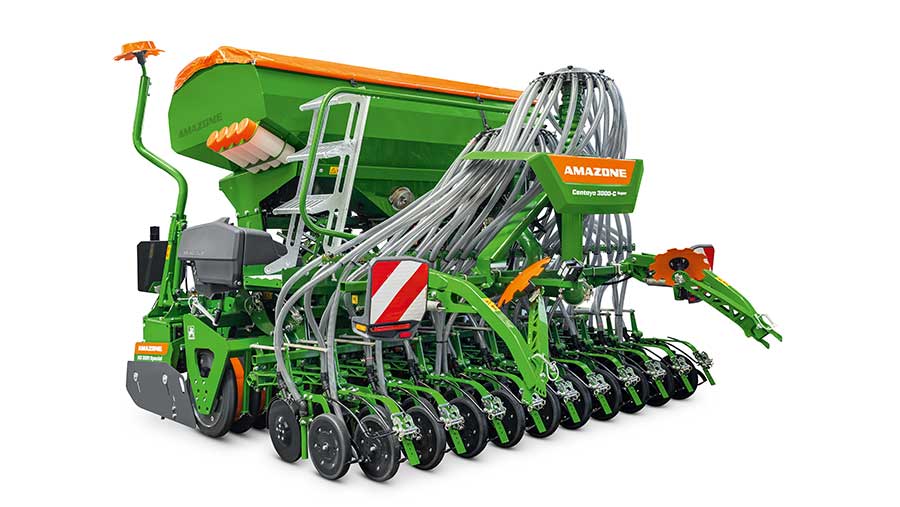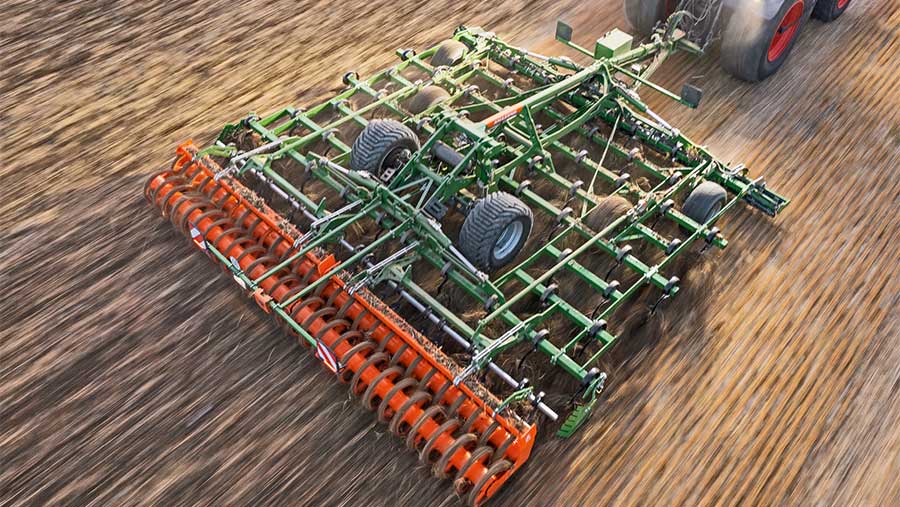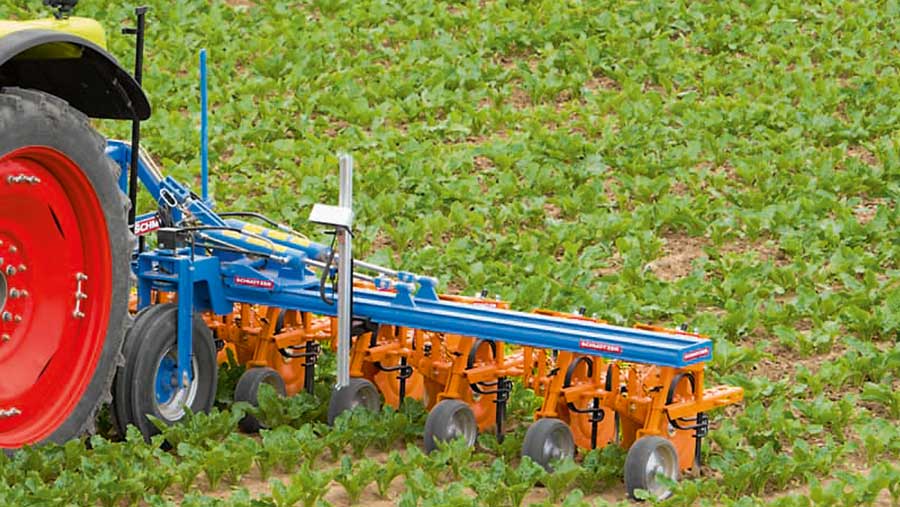Advertiser content
Amazone – at the forefront in changing cultivation trends
The desire to build up soil organic matter levels, improve soil health and increase traffic carrying capability has seen a move towards the use of more cover crops, shallower cultivation techniques, the targeted use of fertiliser with the seed, reduced disturbance during drilling and a change in timing through later drilling to reduce grass weed pressure.
Seeding still encompasses a huge diversity of operation from the conventional soil inversion/ drill combination systems, which offer so much flexibility in warming soils, drying soils and cleaning up difficult weed issues, through to the no-till spectrum of the tine seeder working in min-till or direct in unmoved stubbles, depending on soil type, cropping, soil type or the need for volunteer and grass weed control.

© Amazone Ltd
In light of these trends, Amazone Ltd has added key products to its range of drills and cultivators as well as introducing mechanical weeding and raking systems from within the AMAZONE group through the Schmotzer brand
Flexibility plays the most important part when it comes to keeping investment in machinery manageable and having the ability to utilise a machine for multiple applications spreads that initial cost across the business.
Take, for instance, the FTender-C universal front tank; the split, front-mounted, pressurised tank can meter two different materials to a distribution system at the rear meaning, for example, the conveying of two different cover crop varieties, a mix of fertiliser and seed or the simultaneous metering of fertiliser to two different delivery points.
Couple this with a rear cultivator and the unit can be used for cover crop establishment or deep fertiliser placement ahead of a seeder.
When upfront of a Precea precision air seeder, fertiliser can be metered rearwards to the FerTeC placement coulters with the new Precis high-speed grain singling then able to be used for maize, rape and sugar beet across a variety of row spacings from 45 cm through to 80 cm.
The rear-mounted Precea can then be changed over to an Avant seed rail, where the FTender can supply a mix of grain and fertiliser to the rear folding power harrow drill combination in a min-till or conventional seedbed scenario.
Continuing the theme of targeted nutrition when seeding, the new Centaya-C 3000 Super drill combination offers a 60:40 or 70:30 split rear tank for simultaneous metering of two materials.
Additionally for the Centaya-C, the 110 litre, micro plus applicator can also be used with the combination for an additional seed type of a micro-granular herbicide or slug pellets maybe.
There is quite often still a need to move soil with metal and tines play a major role in managing soils.
With a range of tine cultivators in working widths of 2.5 – 8.0 m, the choice of tine, tine spacing and point selection is crucial in not over-working soils and keeping weed seeds and volunteers under control.
The AMAZONE tined cultivator range can work from depths of 3 cm through to 35 cm and anywhere in between. So, with the changing trend in soil tillage where a very shallow, intensive stubble cultivation is required, then the new Cobra shallow tine cultivator is the answer.
The new Cobra tine cultivator comes in working widths of 6 m and 7 m and utilises the standard semi-trailed TX frame format of swivel drawbar and braked, central running gear for perfect weight distribution, tight headland turns and safe, comfortable, high-speed travel on the road.

© Amazone Ltd
Consisting of 6 rows of tines at a tine to tine spacing of 13.3 cm, a tip to tip clearance of 80 cm and a frame height of 60 cm, it means that the Cobra is well capable of handling copious amounts of surface crop residues and high forward speeds without fear of blockage.
Depth control is carried out utilising the forward-mounted support wheels and the rear packer rollers and this works on a parallelogram-guided system that links the front and back so that the rear rollers, or the optional double harrow, provide an even ground pressure at any working depth. Depth control can be manual or on the move from the tractor seat.
The ECO leaf spring tines can be equipped with a choice of narrow points, or duck foot shares depending on the task in hand; when using the duck foot option, the tines have an overlap of nearly 9 cm. Maximum working depth is 13 cm. The Cobra can be specified with any one of 9 rear rollers or the double harrow.
This style of tine and tine layout makes the Cobra the perfect tool for generating weather-proof stale seedbeds ahead of the drill and it leaves the perfect finish and soil structure to adopt a late drilling date policy in a bid to control grass weeds.
For seedbed preparation in the spring, the duck foot share leaves the perfect finish and crumb structure for spring-sown row crops and cereals.
Behind the tines, the trailing levelling system ensures a uniform, level finish before the following rollers.

© Amazone Ltd
For use in cover crops, the leading knife roller bruises the foliage speeding up the breakdown of the organic matter and presenting the longer stalks in the ideal orientation to be handled by the ECO leaf spring tines.
For seedbed preparation, the front Crushboard can be specified as an alternative to knife roller.
To keep a grip on all of the options and permutations when it comes to soil management there are numerous open days and shows coming up in the next few weeks where there will be AMAZONE experts on hand to look at the options and work out what the best solution to your soil structure issue is.
Provided by
With an extensive range of soil tillage equipment, seeding systems, fertiliser spreaders and crop protection sprayers, AMAZONE is very much your go-to harvest to harvest partner.
